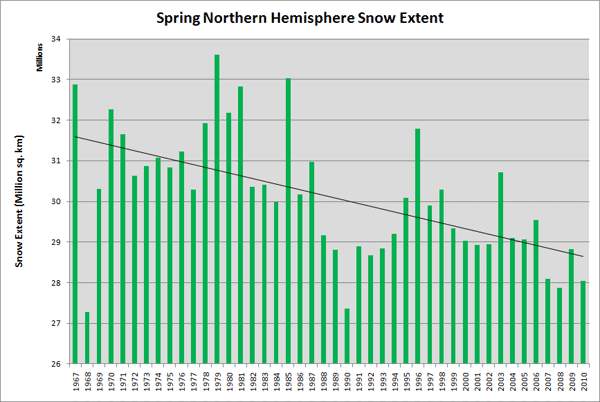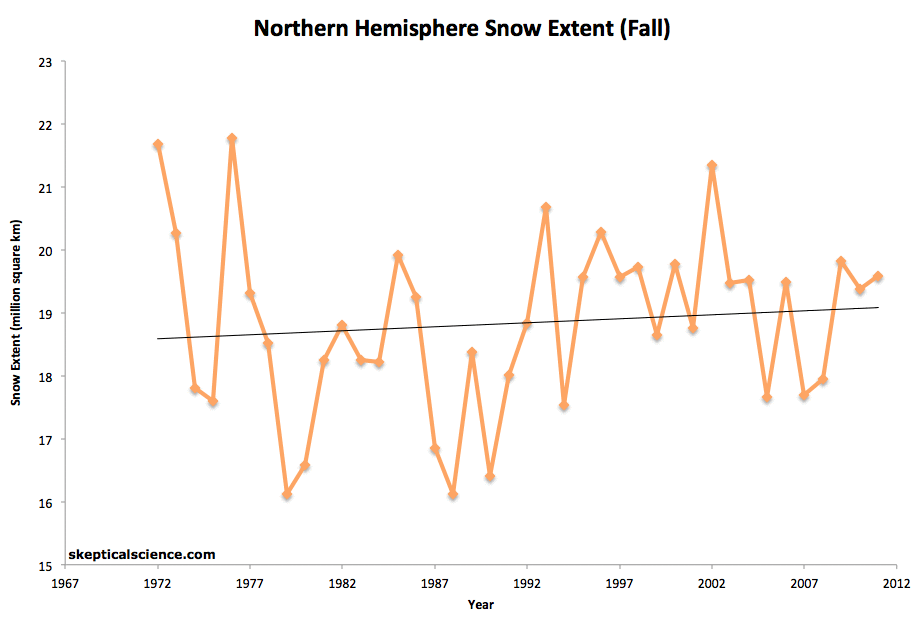The fundamental flaw in this particular myth is rather obvious - cherrypicking of short-term data. In this case choosing a 3-month period to claim that snow cover is not falling. Quite obviously we cannot determine a long-term trend from 3 months' worth of data.
On top of that, this is a very peculiar 3-month period to evaluate. Why is winter snow cover more indicative of the long-term trend than fall, spring, or summer? In fact, the best way to support the false claim that global snow cover is not declining is to ignore the hotter months of the year.
Why Should Snow Cover Decline?
In the near future, global warming will not necessarily result in less winter snowfall globally. Some regions will experience more winter precipitation, which in many regions will fall primarily as snow even if temperatures rise a few degrees, and some regions will receive less. The top map in the figure below shows climate model projections of future winter precipitation changes from the 2007 IPCC report.

In short, we don't necessarily expect winter snow fall or snow cover to decline in the short-term in a warming world. What we do expect is for this snow cover to melt earlier as spring arrives sooner, and at higher temperatures.
What Does the Data Show?
The Rutgers University Global Snow Lab has perhaps the most commonly-used snow cover data, though only for the Northern Hemisphere (NH). In fact, Rutgers does the work for us in plotting seasonal NH snow extents. Here is their plot for the winter:

As you can see, the data do not support this myth. The largest winter NH snow extent was in 1977-78. 2007-08 had the third-highest extent. The winter of 2008-09 comes in about 23rd place out of 44 winters on record. The winter of 2009-10 did come in second, however.
But more importantly, Rutgers also plots the spring NH snow extent:

This paints quite a different picture. As expected in a warming world, the spring NH snow cover extent is declining quite significantly. Rutgers also provides weekly and monthly data for their entire record in tabular format. We can use this to compare snow cover extent in every season, as well as annually:
As expected, there is again a significant long-term drop in NH snow extent, this time looking at all the available data. The trend demonstrates a decline of approximately 1.3 million square kilometers from 1972 to 2010. This decline is confirmed by Déry and Brown (2007), which found a 1.28 million square kilometer decline in NH snow cover from 1972 to 2006. In other words, NH snow extent is declining by approximately 34,000 square kilometers per year.Why Does it Matter?
Snow is white and highly reflective. When it melts, it reveals the much darker ground beneath. Thus the larger the snow cover extent and the longer it lasts into the spring, the more solar energy the planet will reflect. As snow cover declines, the planet absorbs more solar energy (this loss of reflectivity is known as decreasing albedo), accelerating global warming as a result.
In fact, a new study by Flanner et al. (2011) has found that so far, snow cover is declining more rapidly and causing more global warming than climate models expect.
"We find that cyrospheric cooling declined by 0.45 W m−2 from 1979 to 2008, with nearly equal contributions from changes in land snow cover and sea ice. On the basis of these observations, we conclude that the albedo feedback from the Northern Hemisphere cryosphere falls between 0.3 and 1.1 W m−2 K−1, substantially larger than comparable estimates obtained from 18 climate models."
Flanner et al. also show that the radiative forcing from snow cover in the winter months is relatively small, whereas the cooling effect is largest in the spring and summer months (March through July in the NH). This is because in winter, the days are shorter and the sunlight weaker, so albedo has less impact. This again confirms that if we want to evaluate the impact of changing snow cover on the climate, we should be looking at the spring and summer months, not the winter, as Monckton does. Flanner et al. find that the change in snow radiative forcing in the spring and summer months has been significantly positive (less cooling) from 1979 to 2008.
So not only is the suggestion that snow cover is not declining incorrect, but in fact it's declining faster than climate scientists anticipated, and contributing significantly to global warming as a result. This myth relies on not only cherrypicking 3 months out of a 40 year record (0.6% of the available data), but also looks at the least relevant months of the year (winter).


